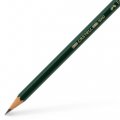Faber-Castell pencils
More than 2 billion wood-cased pencils per year and a company history that goes back to 1761: Faber-Castell's experience is reflected in the brand's products. Whether secural gluing or patented grip zone - Faber-Castell pencils convince as sophisticated writing and drawing instruments.
Wood-cased pencils from Faber-Castell
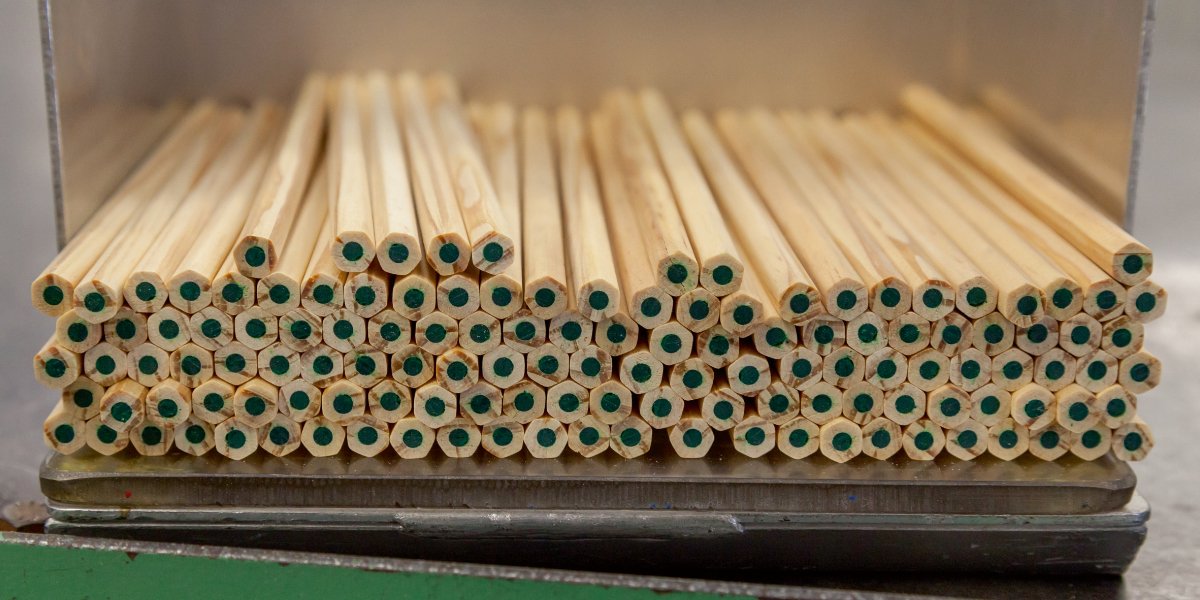
Without pencils, the Faber-Castell brand would certainly not be where it is today. What began as a family-run business in Stein near Nuremberg has long since become a globally active company. At the same time, the brand is always aware of its responsibility: Faber-Castell pencils are climate-neutral. The company relies on wood from certified, sustainable forestry, most of which comes from the company's own forests. The varnish with which Faber-Castell pencils are coated is environmentally friendly and water-based.
Like all wood-cased pencils from the traditional brand, the pencils have been impressing with so-called secural gluing since the 1960s. The lead inside the pencil is not only glued to the barrel at certain points, but over its entire length. The advantage of this special technique is that the lead breaks less quickly. This also makes sharpening the pencil more relaxed.
Interesting to know: If you drop your pencil frequently, this can also be responsible for your lead breaking.
Tip: For loose sketches, it is advisable to hold the pencil at the end of the barrel. If, on the other hand, you want to make precise strokes, you will have better control of the tip if you hold the pen close to it.
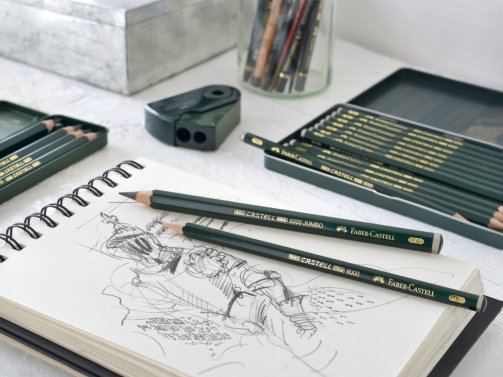
The pencil lead
Do you want to produce accurate technical drawings or lively sketches with your Faber-Castell pencil? The degree of hardness of the lead is the most important factor in selecting a particular model. It is determined by the mixing ratio of clay and graphite. The higher the proportion of clay, the harder the writing instrument and the more delicate your stroke. For artistic work with dark shading and depth, the pencil can be softer.
In this context, it is important to note that there is no international standardization for the designation of pencil hardness grades. Faber-Castell uses the following designations:
A capital B stands for the English word Black. The pencil has a dark line, i.e. it is soft. A hard lead can be recognized by a large H for Hard. If Faber-Castell pencils have the abbreviation HB, you are looking at a hybrid, so to speak. HB actually stands for Hard Black - the pencil lead is medium hard. The capital F stands for Firm. The letters are combined with numbers that stand for the various gradations. A Faber-Castell pencil with the designation 6H, for example, is harder than a 2H model.
The designations apply not only to the classic pencils, but also to the refills of the Faber-Castell mechanical pencils.
Tip: The hardness of a pencil is one thing. But of course the paper you choose, or more precisely its grain, also has a decisive influence on the effect of your work. The smoother the surface, the finer the structure of your drawing.
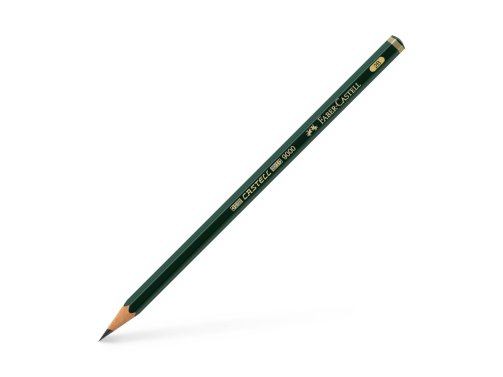
The classic Castell 9000
The absolute classic among Faber-Castell pencils is certainly the Castell 9000, which was introduced as early as 1905. Since it is available from us in 12 different degrees of hardness from 8B to 2H, you will find a suitable variant for writing as well as for drawing and sketching. Its hexagonal barrel is relaxed to grip and stays in place even when you take a break.
At Modulor, the Castell 9000 is available both individually and as a Faber-Castell pencil set. For large-scale work and different stroke widths, you can opt for the XXL version - the Castell 9000 Jumbo - with a 5.3 mm graphite lead.
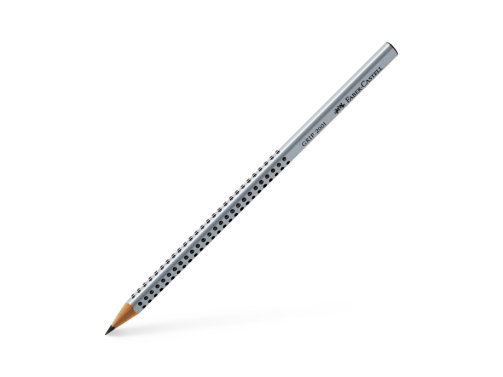
The Grip 2001
The Grip 2001 already bears its special feature in its name: The Faber-Castell pencil is equipped with a patented grip zone. Small nubs make it easier for you to hold the pencil. The ergonomic triangular shape provides additional support. It ensures that you adopt a correct pencil position almost automatically and can write without tiring. The pencil is available in five different degrees of hardness.
Tip: Beginners will benefit from the jumbo version of the Grip 2001. The ergonomic barrel of this Faber-Castell pencil is particularly easy to grip and hold thanks to its large format.
Faber-Castell mechanical pencils and Faber-Castell clutch pencils
You like the classic pencils, but are looking for a particularly reliable model? Then take a closer look at the Faber-Castell mechanical pencils and clutch pencils in our range.
Their shaft is always the same length. As the center of gravity of the pencils does not change as they become shorter through regular sharpening, you will always enjoy the same comfort when drawing, writing and sketching with mechanical pencils and clutch pencils.
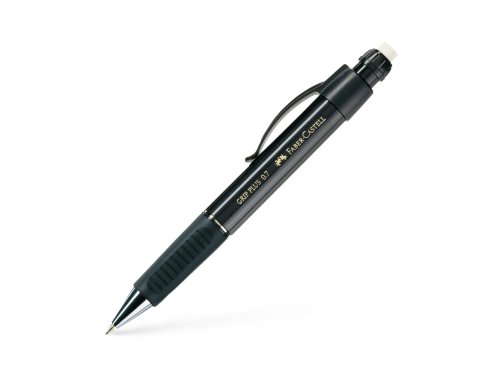
Faber-Castell Grip 1345 and Faber-Castell Grip Plus
The mechanical pencils Grip 1345 and Grip Plus are ideal if you like to use your Faber-Castell pencil for writing. Both models are equipped with a spring-loaded lead. It slides back while writing and thus breaks off less quickly. For possible corrections, the pencils have erasers that can be turned out. The grip zones of the pens are rubberized. The Grip Plus model offers you a particularly secure grip and hold thanks to its triangular shape.
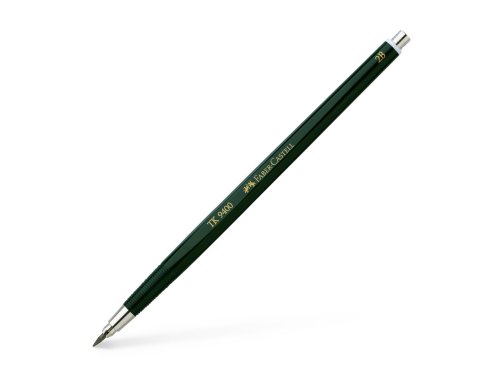
The TK 9400
The classic among Faber-Castell clutch pencils is the TK 9400. Its name makes it clear: this pencil is suitable for both technical and artistic work. The strong collet ensures that the lead sits firmly in place. The hexagonal shaft of the Faber-Castell pencil has ergonomic grip grooves. We offer a choice of leads in nine degrees of hardness. From 6B to 4B they have a diameter of 3.15 mm, and between 3B and 4H their diameter is 2 mm. When choosing a pencil, it is therefore advisable to consider in advance whether you would prefer to use a hard or soft Faber-Castell pencil.
Fun Fact: Neither in the past nor today did a pencil contain lead. It was mistakenly assumed that the graphite used as lead was lead ore. Even after this error was clarified, the pencils retained their original name.
